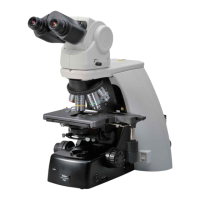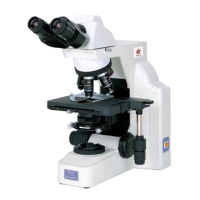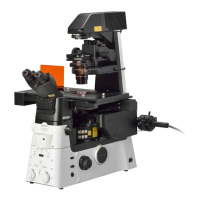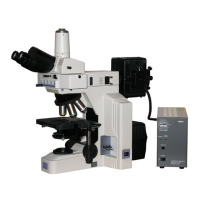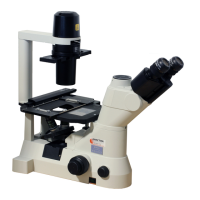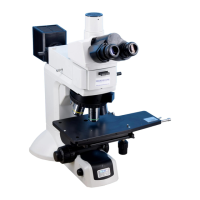Chapter 2 Microscopy Operations
66
Differential
Interference Contrast
Microscopy
Preparation
Focus and Optical
System Adjustment
Microscopy
Differential Interference
Contrast Microscopy
1 2 3 4 5 6 7 8 9 10 11 12 13 14 15 16 17 18 19 20 21 22 23 ■ ■
Switch from Differential Interference Contrast Microscopy to Bright-field Microscopy
Loosen the polarizer rotation clamp screw and rotate the
upper part of the rotatable polarizer unit clockwise to
remove the polarizer from the optical path.
(1) If the analyzer slider or lambda plate slider is in optical
path, pull out to the first click-stop position and remove
it from optical path.
Pull out the DIC slider at objective position from
optical path and remove it.
Polarizer removed from optical path
1
2
A
λ
10x
Removing the optical element for differential
interference contrast microscopy
from the optical path
(2) Operate the motorized universal condenser to bring the
[OPEN] position into the optical path.
PA__2x____Z:__1235.555um
OPEN__AS12.3mm__FS25.5mm
Low magnification microscopy
To perform bright-field microscopy with a 2x or 4x
objective, attach the “2-4x auxiliary lens” to the
condenser turret and move it into the optical path.
When doing so, fully open the aperture and field
diaphragms for the maximum range of illumination.
For details on other operations and precautions, see “3
Bright/Dark-field Microscopy Procedure”.
Switch from Differential Interference Contrast Microscopy to Epi-Fluorescence Microscopy
See the end of “4 Epi-Fluorescence Microscopy Procedure”.
nalyze
slider
Objective side DIC
slider
(or dummy slider)
Lambda
plate
Polarizer rotation
clamp screw
